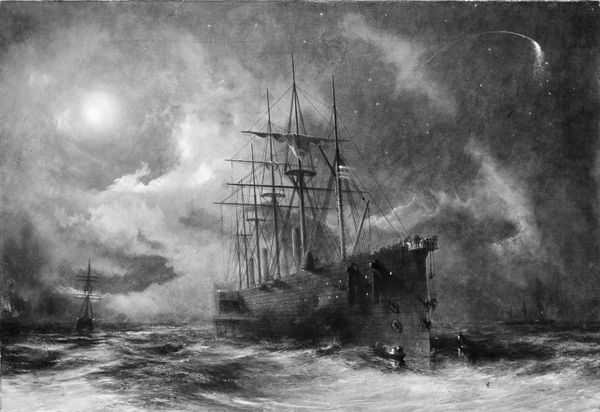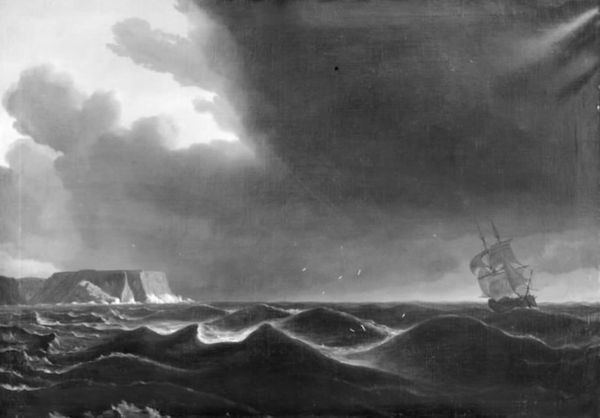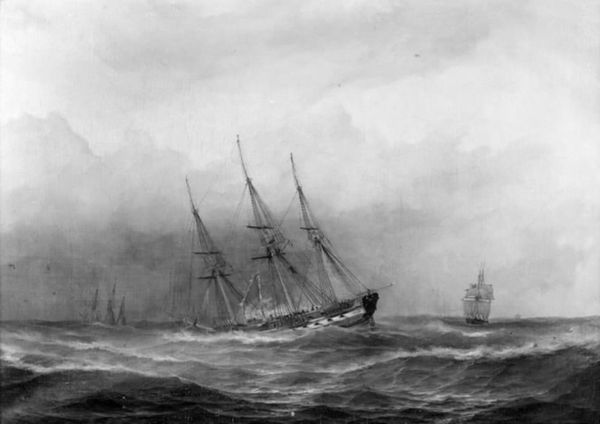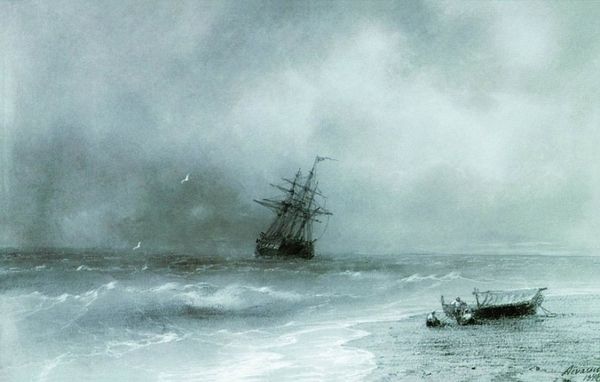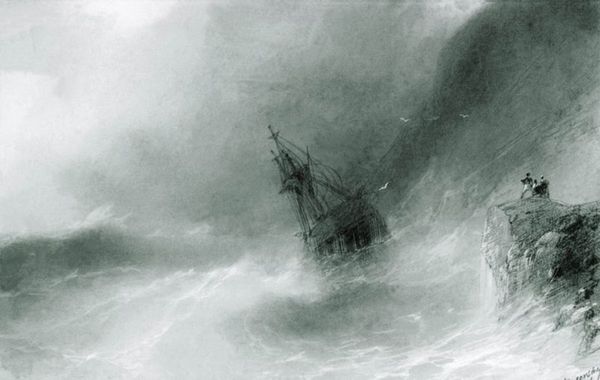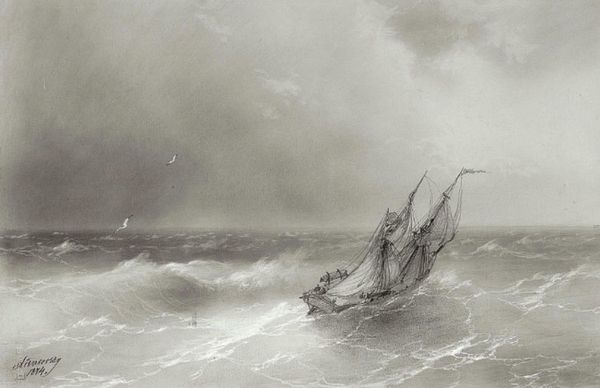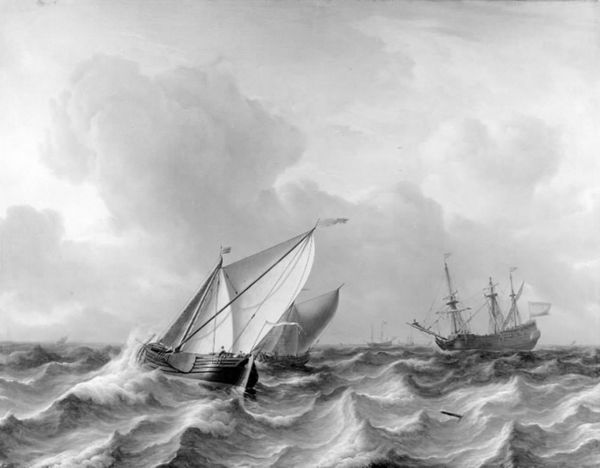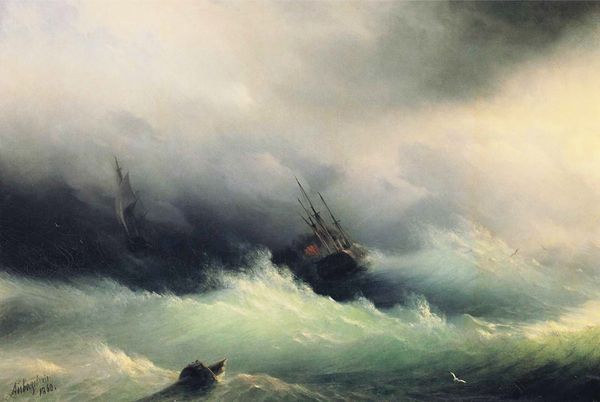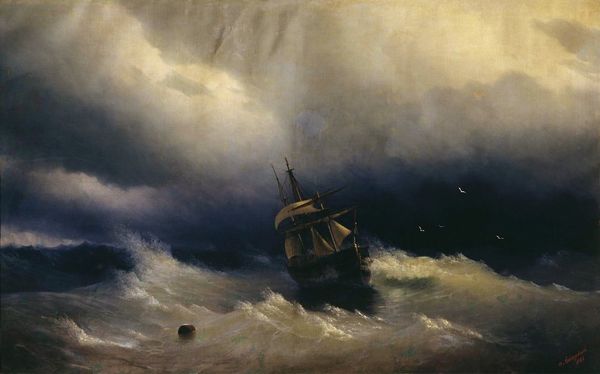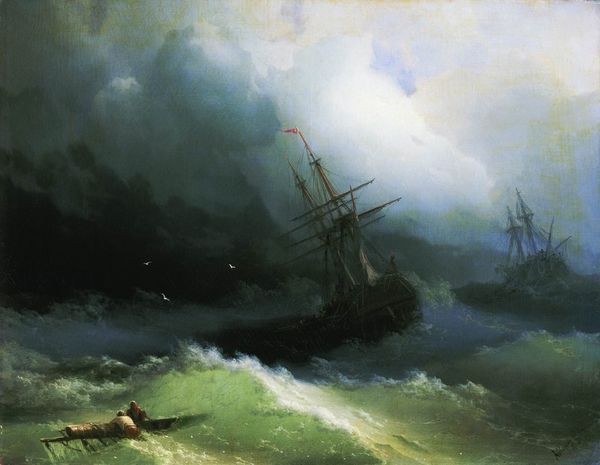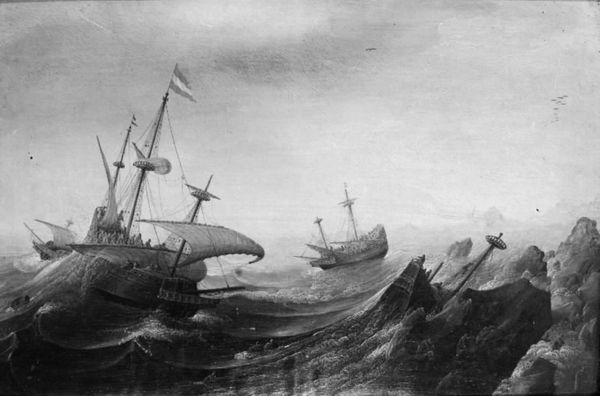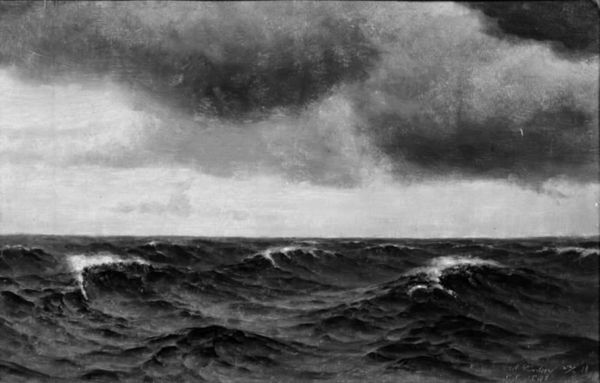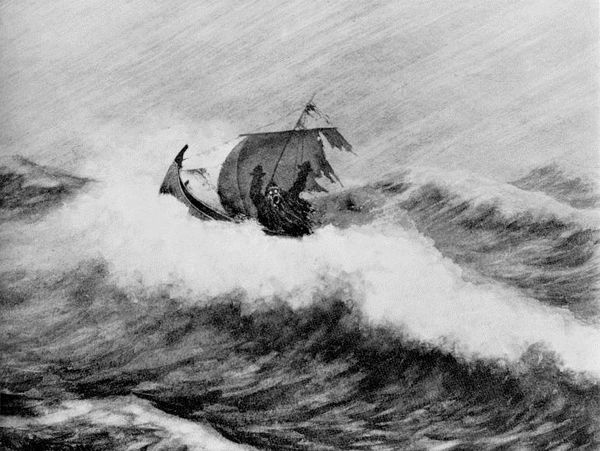
Et orlogsskib efter fransk konstruktion i færd med at kappe de master, der er gået over bord i en storm 1839
0:00
0:00
painting
#
painting
#
landscape
#
romanticism
#
black and white
#
monochrome photography
#
fog
#
monochrome
#
monochrome
Dimensions: 87 cm (height) x 132 cm (width) (Netto)
Editor: Friedrich Theodore Kloss painted "Et orlogsskib efter fransk konstruktion i f\u00e6rd med at kappe de master, der er g\u00e5et over bord i en storm" in 1839, a powerful image rendered in monochrome. It really conveys a sense of struggle against the elements. How do you interpret this work, especially considering its material construction and historical context? Curator: This painting speaks volumes about the labour involved in maritime activity and the precariousness of seafaring life in the 19th century. Consider the ship itself, constructed from specific materials obtained through vast trade networks, reflecting colonial power and resource extraction. How does the monochromatic palette influence our understanding of these materials and the conditions of labour onboard? Editor: I hadn't considered the source of materials, that's interesting. It also draws attention to the limited color palettes, which might indicate certain trade constraints at the time. The black and white style really highlights the stark reality faced by sailors in that era. Do you think Kloss intentionally made these connections? Curator: The painting's somber tones point to the physical hardship and human cost linked to naval operations. The material conditions within which Kloss was working--both artistic materials and prevailing social attitudes to work--informed the painting. Does the broken ship force us to acknowledge those unnamed workers and their families relying on this naval vessel? How does knowing that transform our experience with the painting? Editor: Absolutely, thinking about it as a depiction of the human impact of shipbuilding and seafaring definitely reframes the work. Thanks! I’ll be sure to keep material context at the forefront of my mind moving forward. Curator: Indeed, it encourages us to acknowledge the intertwined relationship between the making of art and the larger socio-economic structures it represents.
Comments
No comments
Be the first to comment and join the conversation on the ultimate creative platform.
